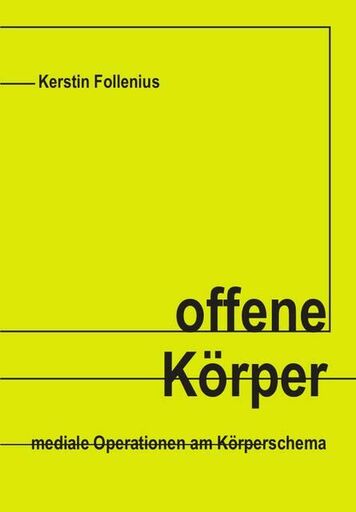Prof. Dr. Marie-Luise Angerer
Offene Körper

Year: 2017
Categories: Text / Book / Print, habilitation
abstract
On September 7, 2001 the first transatlantic remote operation on a human body took place between New York and Strasbourg. High-precision imaging and remote control methods as well as high-performance data connections enabled the body to spread far beyond its physical limits. This open body seemed far more open than the incision in its skin revealed. The medical body thus became a media issue.
Several questions arise from this operation. How do different artistic and medical practices, as two diametrical forms of reflection on corporeality, relate to the precarious intersection of body and machine? I plead, with Donna Haraway, for placing these different disparities in a relation of becoming with. As a framework for this encounter, I refer to the conceptual field of the technical ensemble as developed by the philosopher of technology Gilbert Simondon. The body schema, with its multiple psychoanalytic implications, is a promising model to rethink the body in a new and open manner. The aim is to reintroduce the concept of the body schema for media studies, as it captures precisely those structural connections of body and (media) technology that are less affected by differences and binary grids (natural-technical e.g. ), but are rather determined by an ""increasing indistinguishability"" (Angerer).





